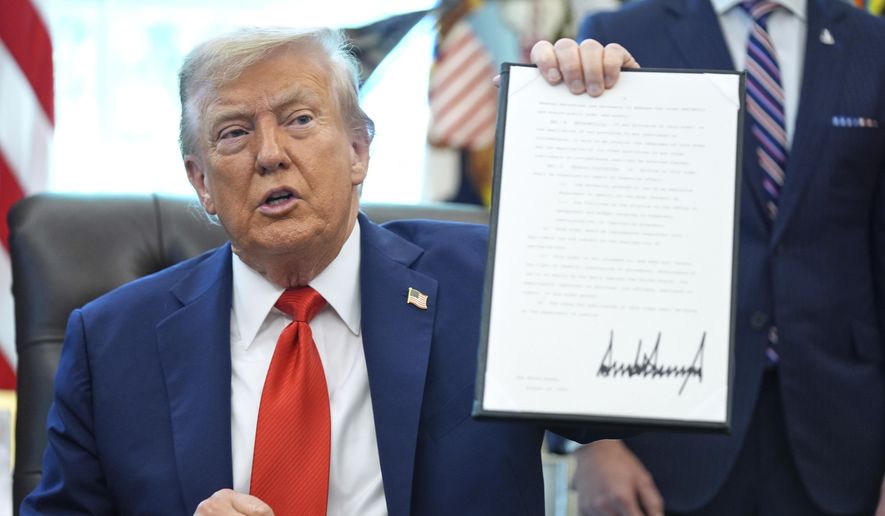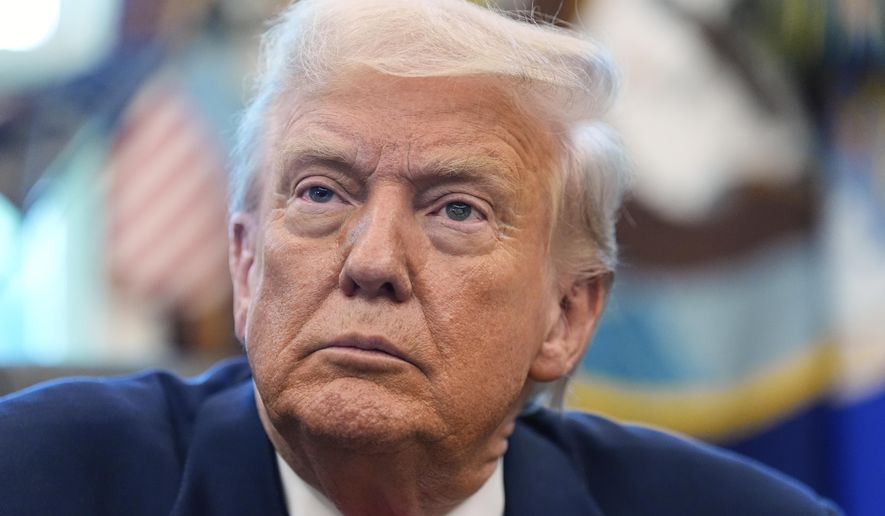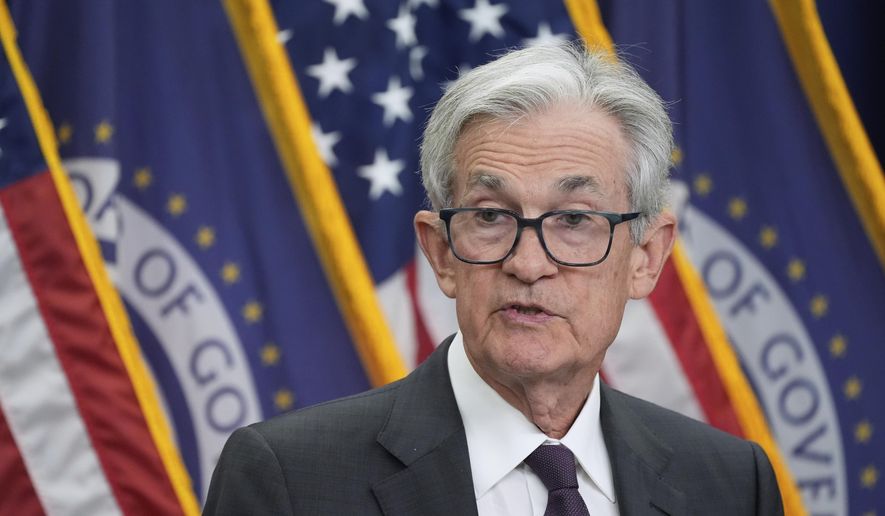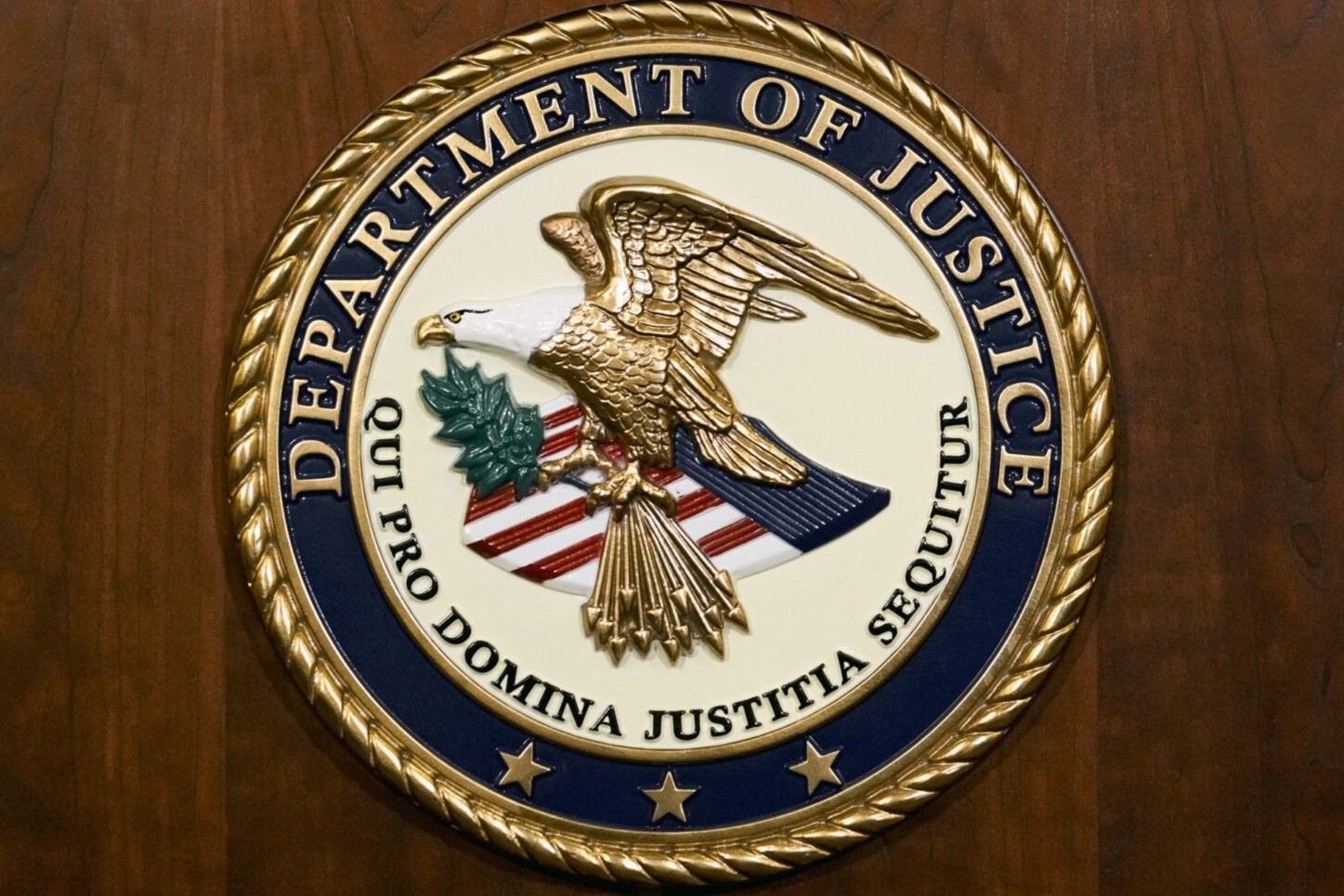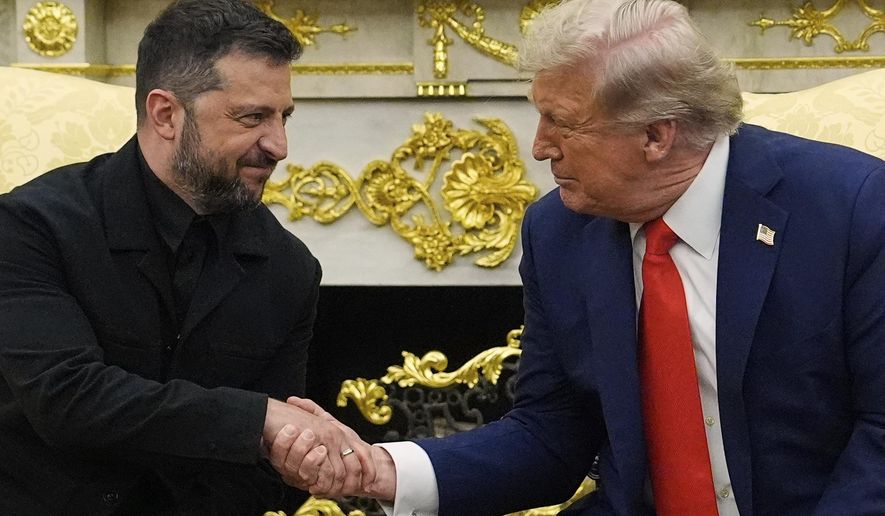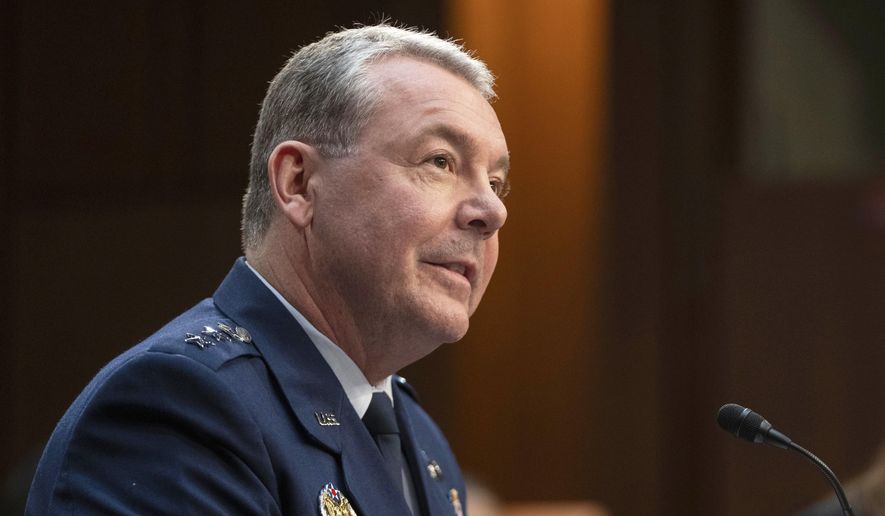
Mike Glenn | August 27, 2025
(The Washington Times) — More than a dozen senior generals and admirals have been fired since President Trump returned to the White House in January, including the first women to lead the Navy and the Coast Guard and the second Black man to serve as chairman of the Joint Chiefs of Staff.
The Trump administration has offered few explanations, but speculation, informed and otherwise, has run the gamut from a straightforward downsizing of bloated leadership ranks to a more politically motivated purge of leaders seen as insufficiently loyal to the White House or those seen as diversity hires promoted under previous regimes.
The most recent high-level military officer sent packing was Air Force Lt. Gen. Jeffrey Kruse, the director of the Defense Intelligence Agency. He was fired Friday, only weeks after a classified DIA assessment of the U.S. strikes on Iran was leaked to media.
The assessment contradicted the Trump administration’s contention that the bombing mission demolished Tehran’s nuclear program. Defense Department officials said the DIA’s pessimistic report was based on limited intelligence gathered the day after the strike.
Sen. Mark R. Warner, Virginia Democrat and vice chair of the Senate Select Committee on Intelligence, blasted the sacking of Gen. Kruse. He said the Trump administration has treated intelligence as a loyalty test rather than a safeguard for the country.
“It is perhaps unsurprising that General Kruse’s removal as head of the Defense Intelligence Agency comes on the heels of a DIA assessment that directly contradicted the president’s claims to have ‘obliterated’ Iran’s nuclear program,” Mr. Warner said in a statement. “That kind of honest, fact-based analysis is exactly what we should want from our intelligence agencies, regardless of whether it flatters the White House narrative.”
Gen. Kruse was fired days after Gen. David Allvin announced his retirement halfway into his traditional four-year term as Air Force chief of staff. Gen. Allvin said he would remain in the position until the Senate confirms his replacement.
“I think these firings are unjustified and unnecessarily risky. Removing fully qualified officers who don’t meet some politically driven narrative put forward by Secretary [of Defense Pete] Hegseth is a mistake,” retired Navy Rear Adm. Mark Montgomery told The Washington Times. “With regards to Lt. Gen. Kruse, the last thing Secretary Hegseth needs are senior officers who are unwilling or uncomfortable telling him the facts as they know them, which is all Kruse did.”
Mr. Hegseth asked Gen. Allvin to retire early and said he would be allowed to announce the move himself, according to a report in The Washington Post.
“The Air Force is fortunate to have leaders like General Dave Allvin. During his tenure, the Air Force has undertaken transformational initiatives that will enable Airmen to answer their nation’s call for decades to come,” Air Force Secretary Troy E. Meink said in a statement.
The press and national security experts have widely described the firings of top-level military officers as unprecedented. Although President Truman’s sacking of General of the Army Douglas MacArthur is likely the best-known example, even recent presidents have fired specific generals.
In 1993, President Clinton forced Maj. Gen. Harold N. Campbell to resign from the Air Force. Gen. Campbell had publicly criticized the president during a military recruiting conference in Texas.
President George W. Bush replaced two senior Army officers, Gen. George Casey and Gen. Ricardo Sanchez, from top positions in Iraq in 2006 and 2007. However, those moves were seen as part of a larger strategic plan to improve the military’s effectiveness and to address the escalating challenges in Iraq.
President Obama relieved Army Gen. David McKiernan as commander of U.S. forces in Afghanistan in 2009, about five months after he moved into the White House. Gen. McKiernan’s replacement, Gen. Stanley McChrystal, was later forced out after criticizing senior administration officials in a magazine interview.
However, the sheer scale of Mr. Trump’s firings so early into his administration is considered historically unusual.
The dismissals began within days of Mr. Trump’s return to the White House, with the firing of Adm. Linda Fagan, commandant of the Coast Guard, by the acting homeland security secretary. Department of Homeland Security officials later told the U.S. Naval Institute that her termination resulted from “leadership deficiencies, operational failures and inability to advance the strategic objectives of the U.S. Coast Guard.”
Mr. Trump said in a Feb. 21 post on Truth Social that Air Force Gen. Charles Q. Brown would be out as chairman of the Joint Chiefs of Staff before his term was over.
“He is a fine gentleman and an outstanding leader, and I wish a great future for him and his family,” Mr. Trump said just before announcing his nomination of Air Force Gen. Dan Caine to replace Gen. Brown.
Gen. Brown, the second Black man to serve as chairman of the Joint Chiefs of Staff, greeted Mr. Hegseth at the Pentagon on his first day as defense secretary. Mr. Hegseth told reporters he looked forward to working with Gen. Brown, but in an interview with a podcaster before his nomination, Mr. Hegseth said Gen. Brown should be sacked.
“Any general that was involved — general, admiral, whatever — that was involved in any of the [diversity, equity and inclusion] s—- has got to go,” he said on the “Shawn Ryan Show.” “Either you’re in for warfighting, and that’s it. That’s the only litmus test we care about.”
Rep. Joaquin Castro, Texas Democrat, accused Mr. Trump and Mr. Hegseth of firing Gen. Brown because they “couldn’t see past his skin color.”
“General Brown has 40 years of distinguished service. Trump and Hegseth just want yes men who look like them,” Mr. Castro said on Facebook after the firing. “This is destabilizing for our nation.”
Adm. Lisa Franchetti, the first woman to sit on the Joint Chiefs of Staff as chief of naval operations, was also fired on Feb. 21. Her removal was part of a broad wave of dismissals in the incoming Trump administration, including Air Force Gen. James Slife, the vice chief of staff.
In April, Mr. Trump fired the director of the National Security Agency, Air Force Gen. Timothy Haugh, and Vice Adm. Shoshana Chatfield, a former head of the Naval War College. Adm. Chatfield was the U.S. military representative to the NATO military committee at the time of her termination.
“The Navy will be much worse off if Secretary Hegseth continues to relieve female officers from senior command and leadership positions,” said Adm. Montgomery, director of the Center on Cyber and Technology Innovation at the Foundation for Defense of Democracies think tank.
“These women are fully qualified in all respects, and contrary to Hegseth’s uninformed writings in his book, female officers are equally qualified to command at all operational levels of the Navy,” Adm. Montomgery said.
Other recent firings include Vice Adm. Nancy Lacore, the chief of the U.S. Navy Reserve, and Rear Adm. Milton Sands, commander of the U.S. Naval Special Warfare Command.
In May, the Defense Department announced a plan to reduce the number of four-star positions across the active-duty military by at least 20% and the number of general officers in the National Guard by at least 20%. In a memorandum announcing the senior-level personnel reduction, Mr. Hegseth said the department must “cultivate exceptional senior leaders who drive innovation and operational excellence.”
“A critical step in this process is removing redundant force structure to optimize and streamline leadership by reducing excess general and flag officer positions,” he wrote.
Rep. Adam Smith of Washington state, the top Democrat on the House Armed Services Committee, said he was skeptical of the “sweeping” plans to cut senior military leadership because the plans lack data-driven analysis and an explanation of the desired outcome.
“As a result, his proposal has raised more questions than it answers,” Mr. Smith said in a statement. “Does it make sense to make these cuts on the heels of the previous reductions? Is this part of a larger budget and national security strategy? Or is this an arbitrary gutting of military leadership?”
The administration’s housecleaning hasn’t been limited to the military. In his second term, Mr. Trump has fired thousands of rank-and-file federal workers across all agencies, dismissed department heads, and canned board and commission members. On Monday, he announced plans to fire Lisa Cook, a member of the Federal Reserve Board of Governors, though it’s not clear whether the president has that authority.









